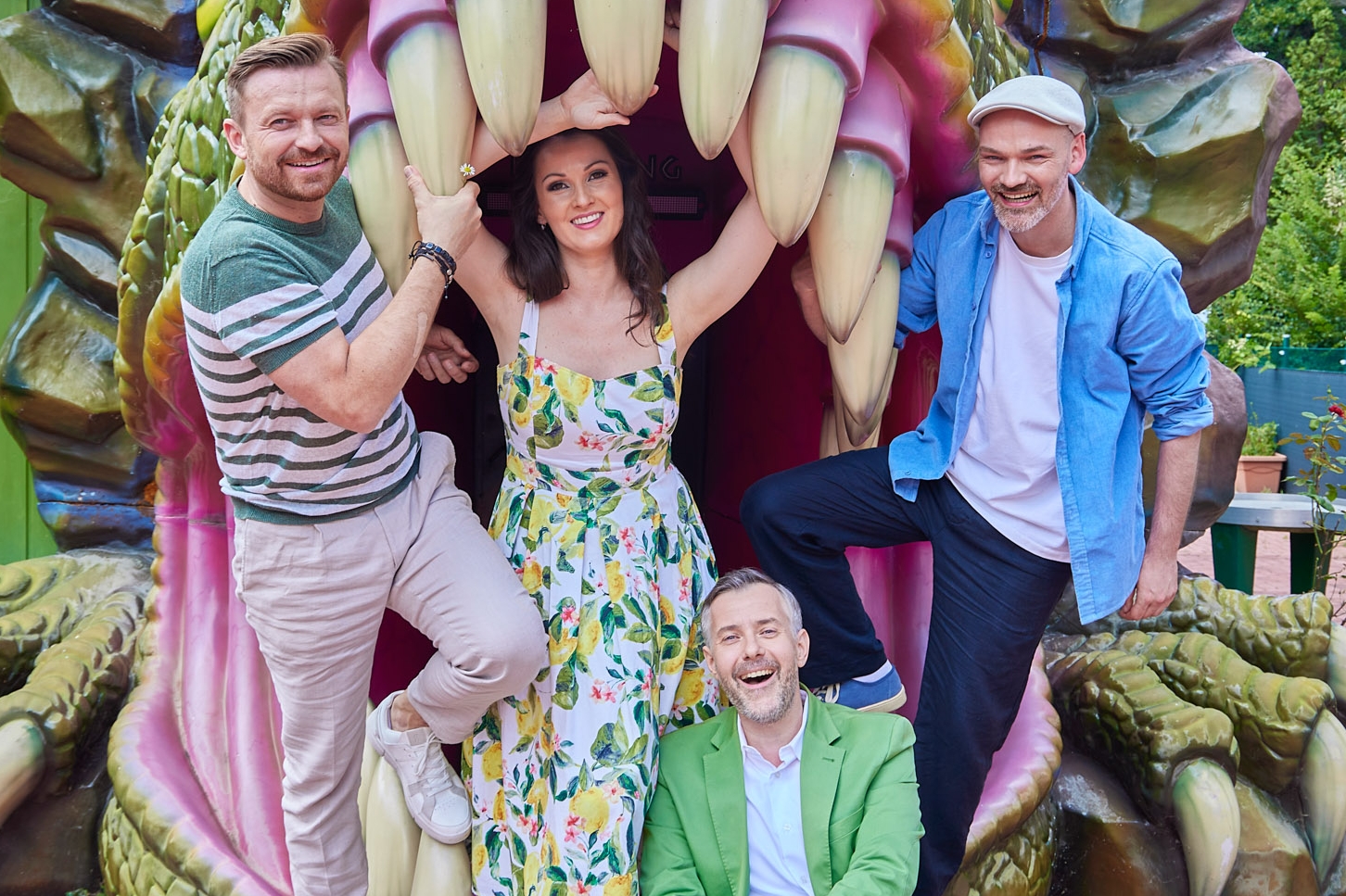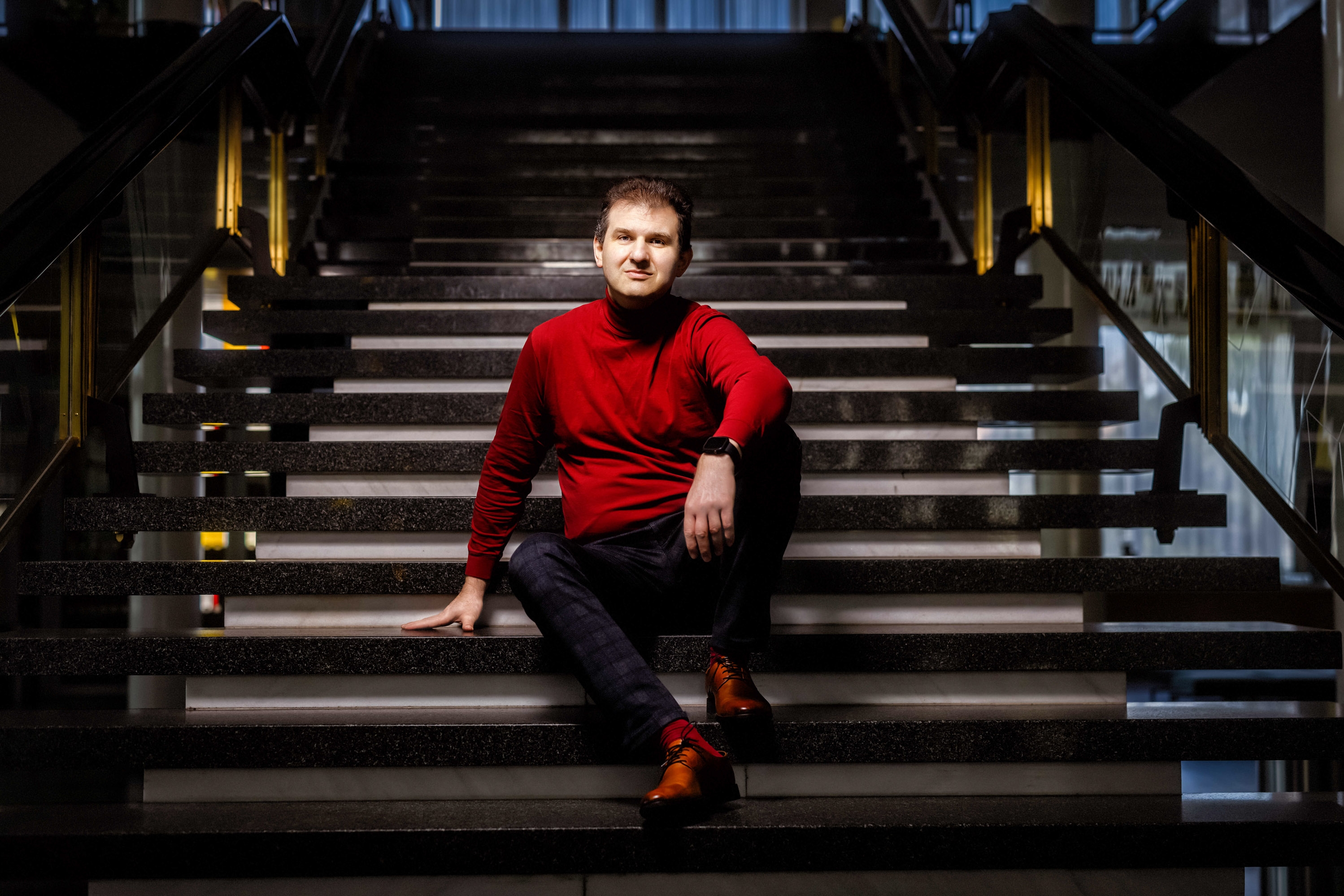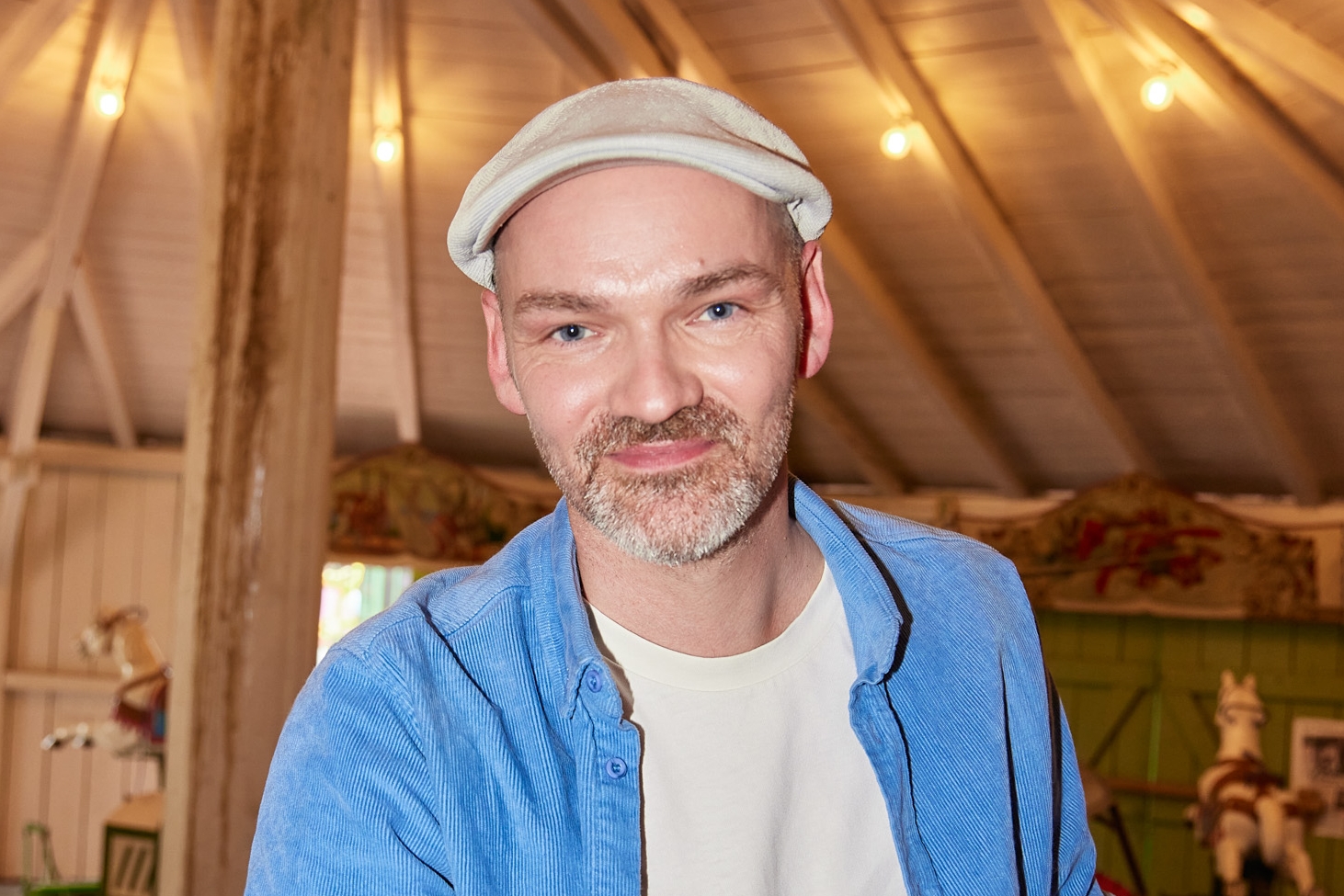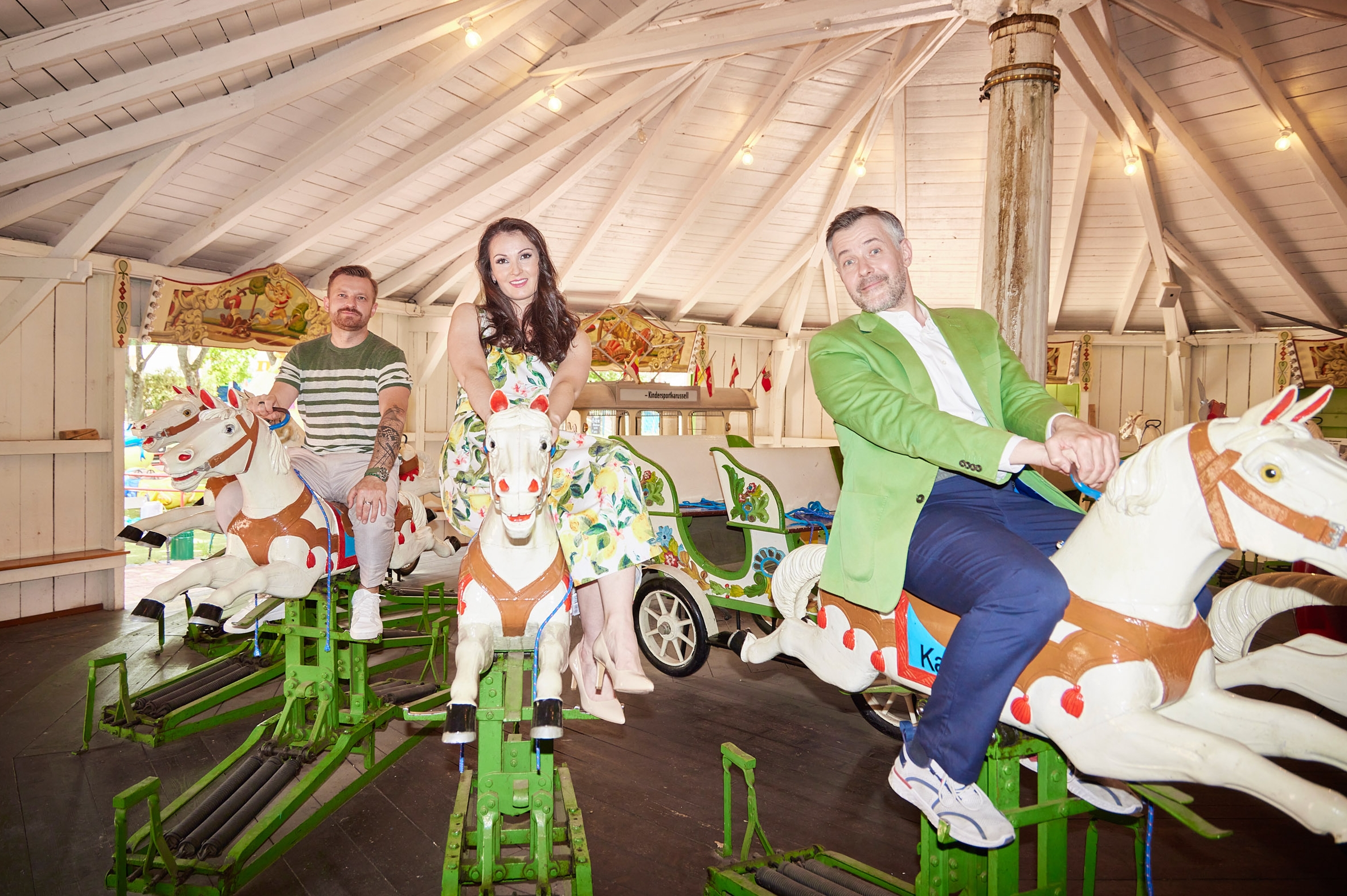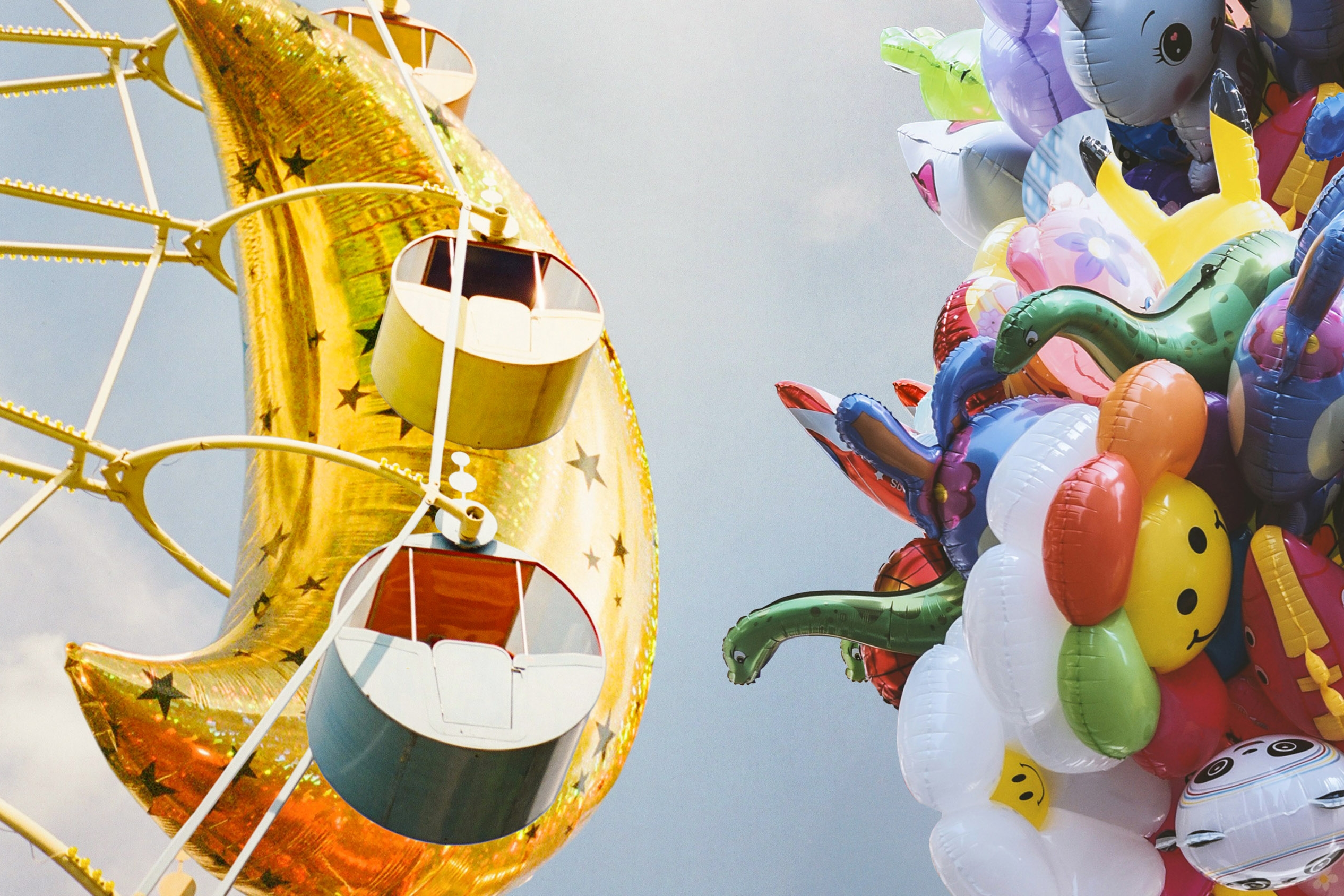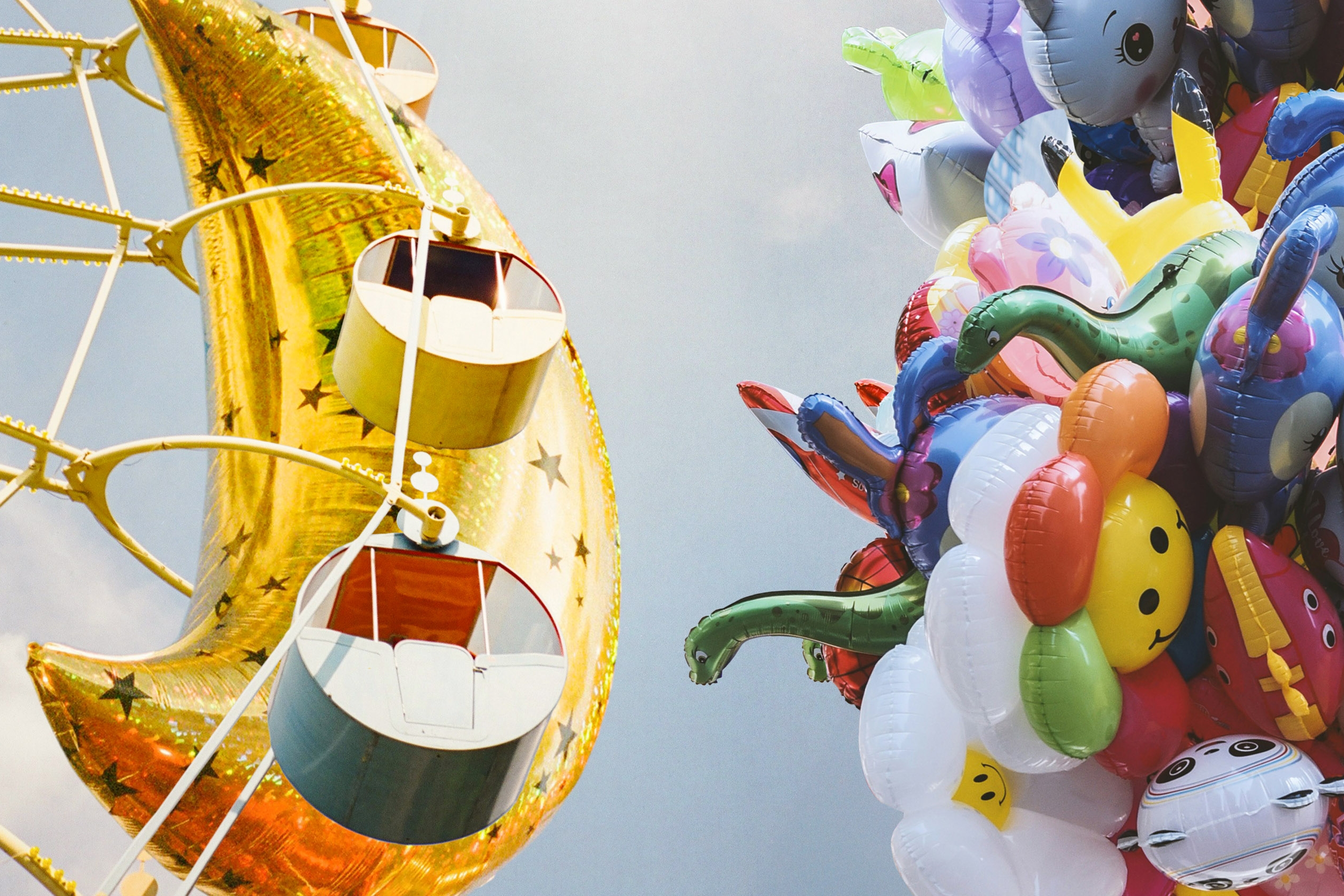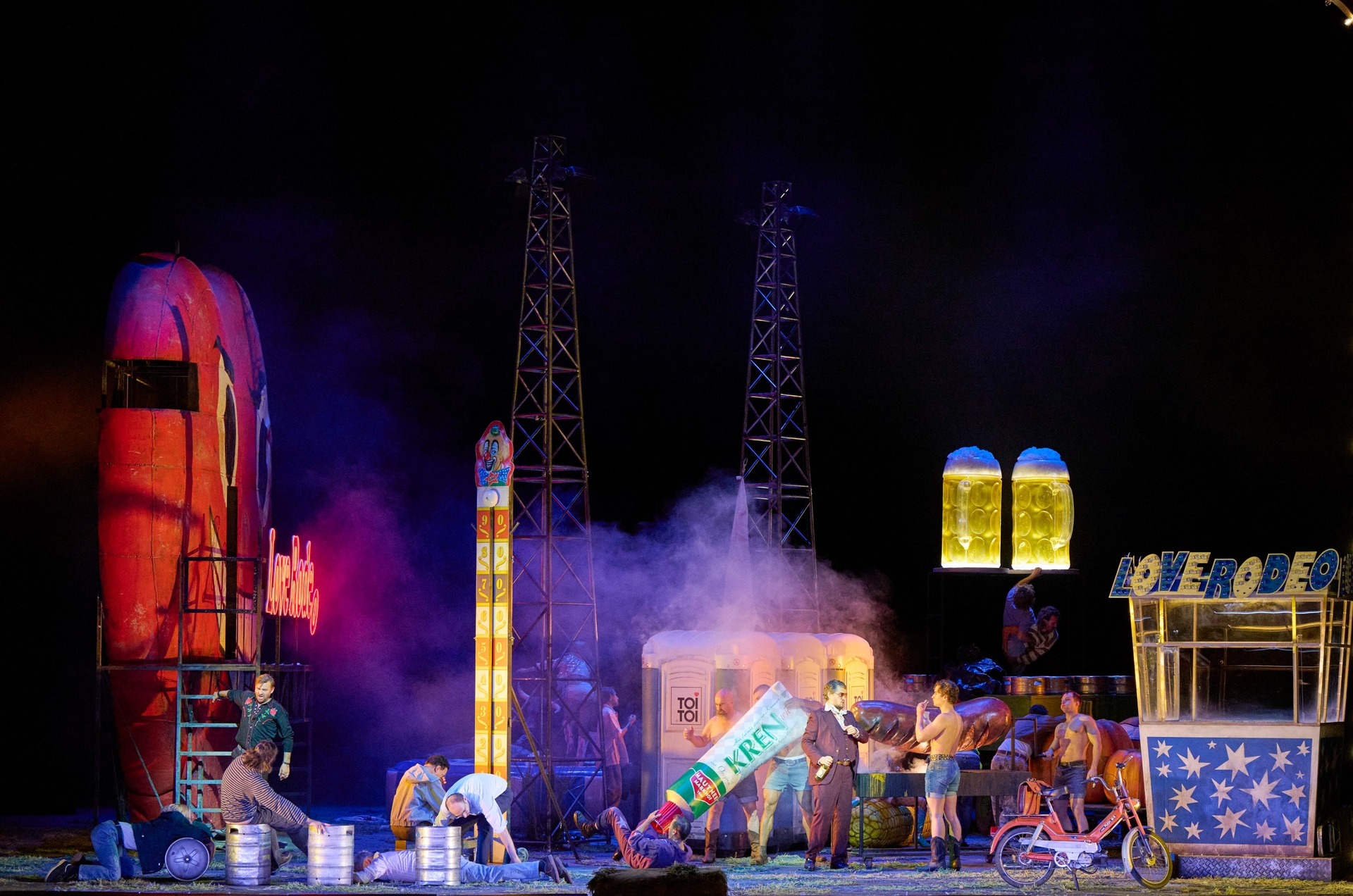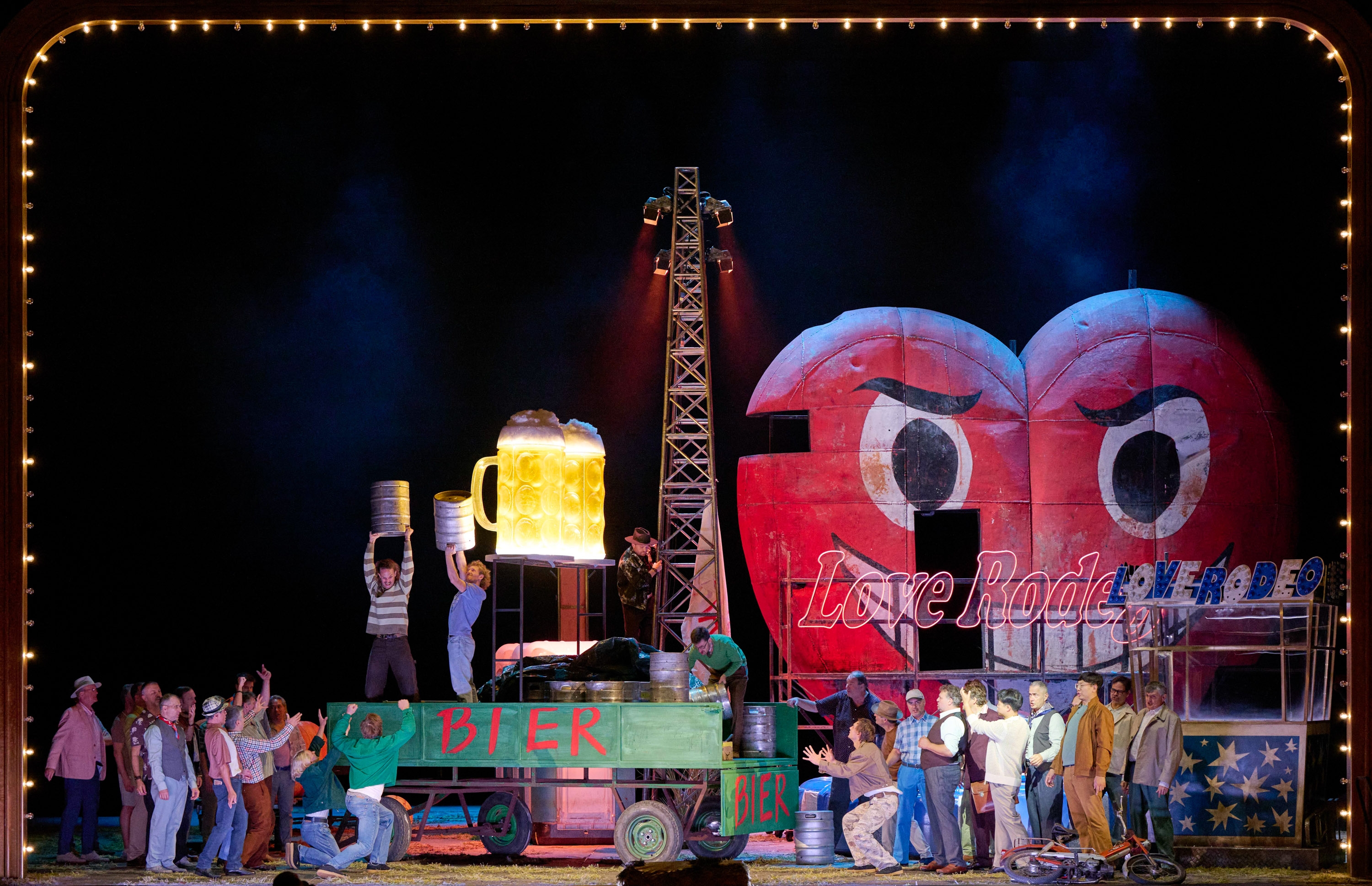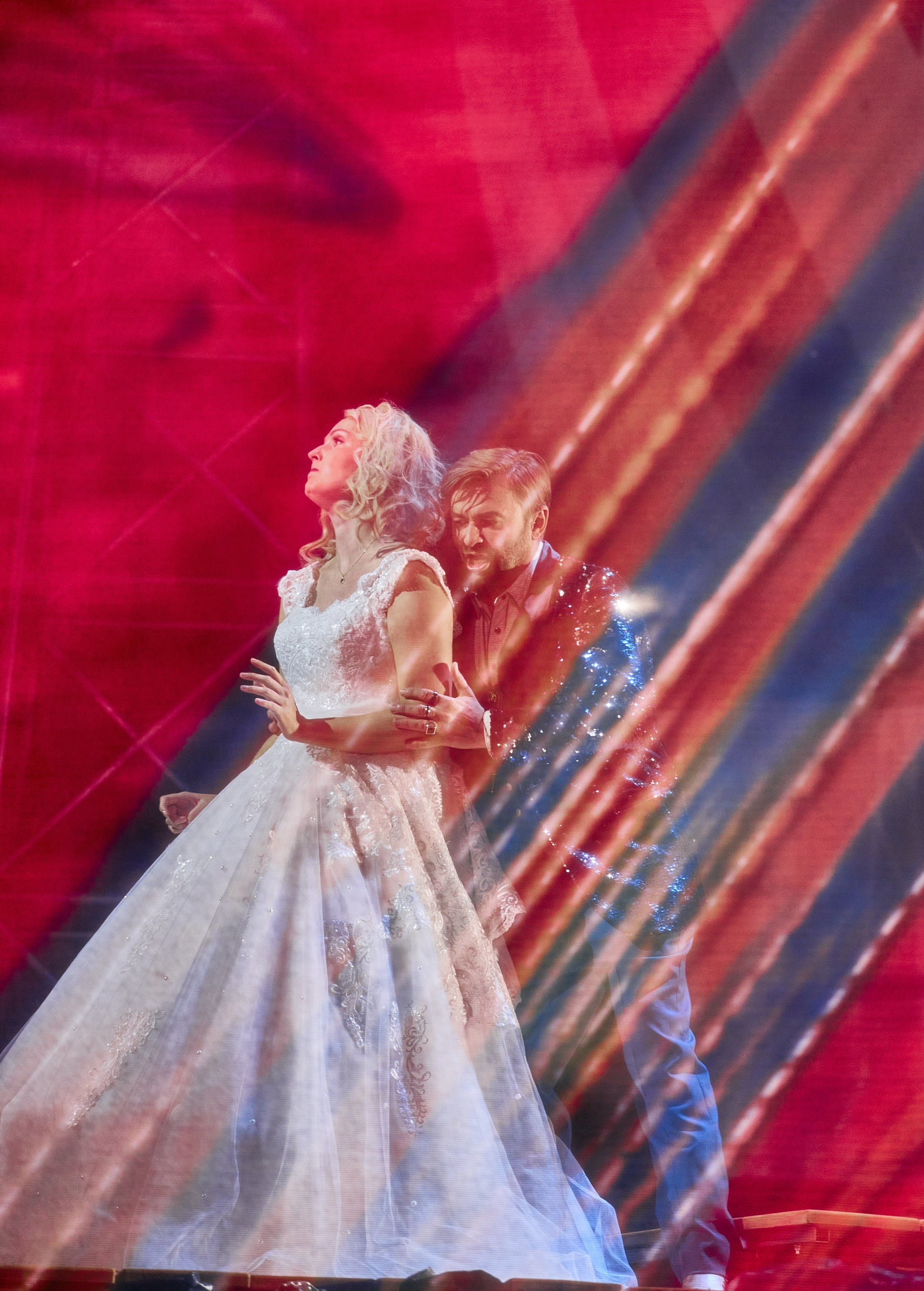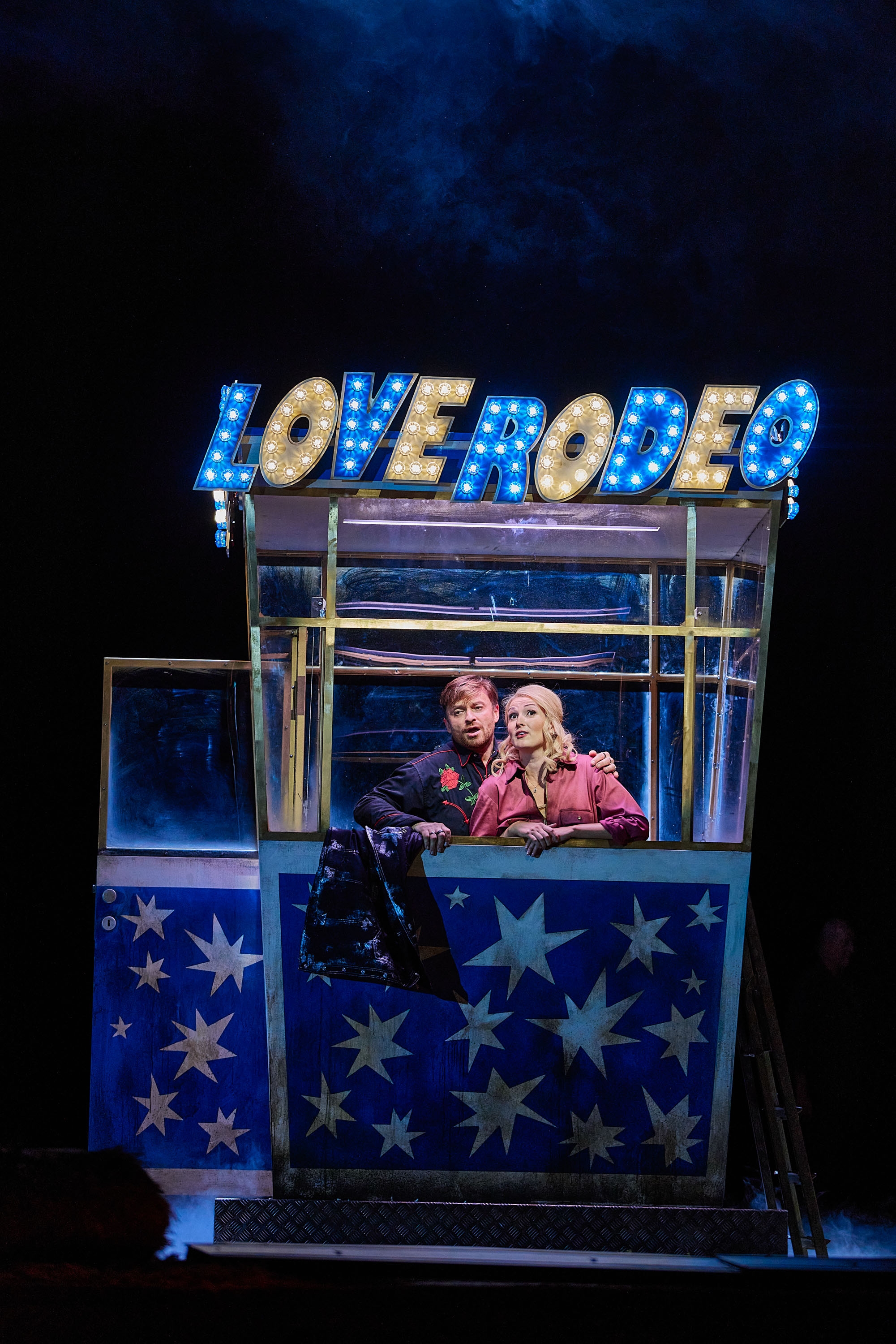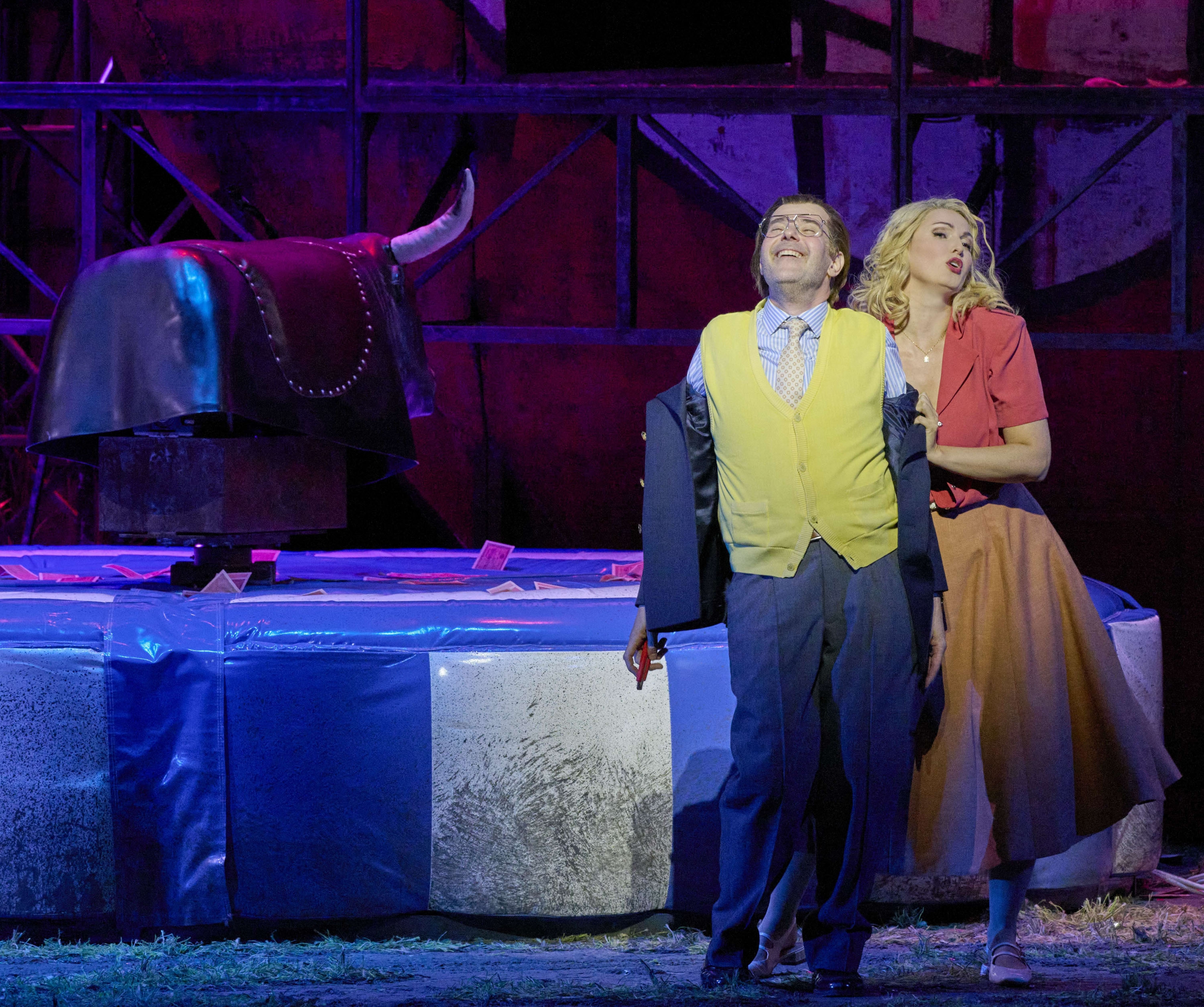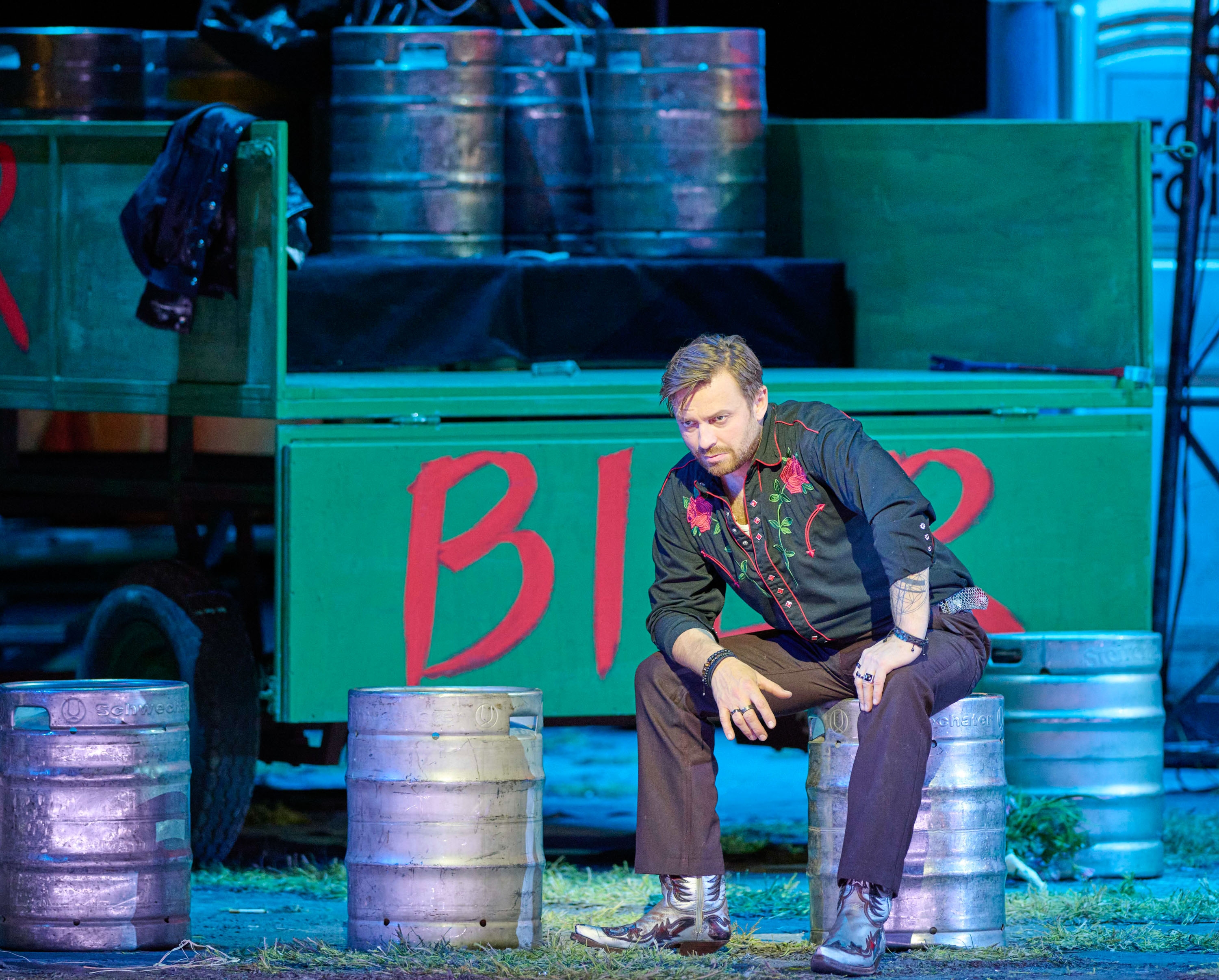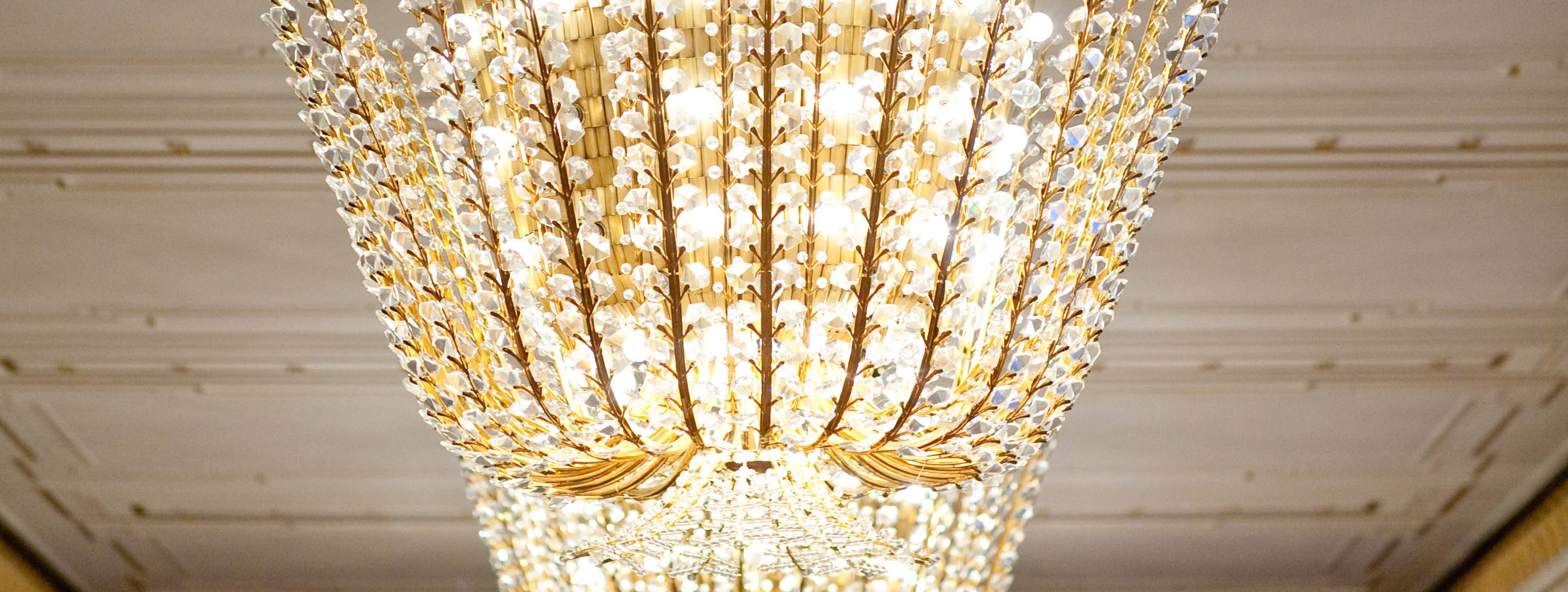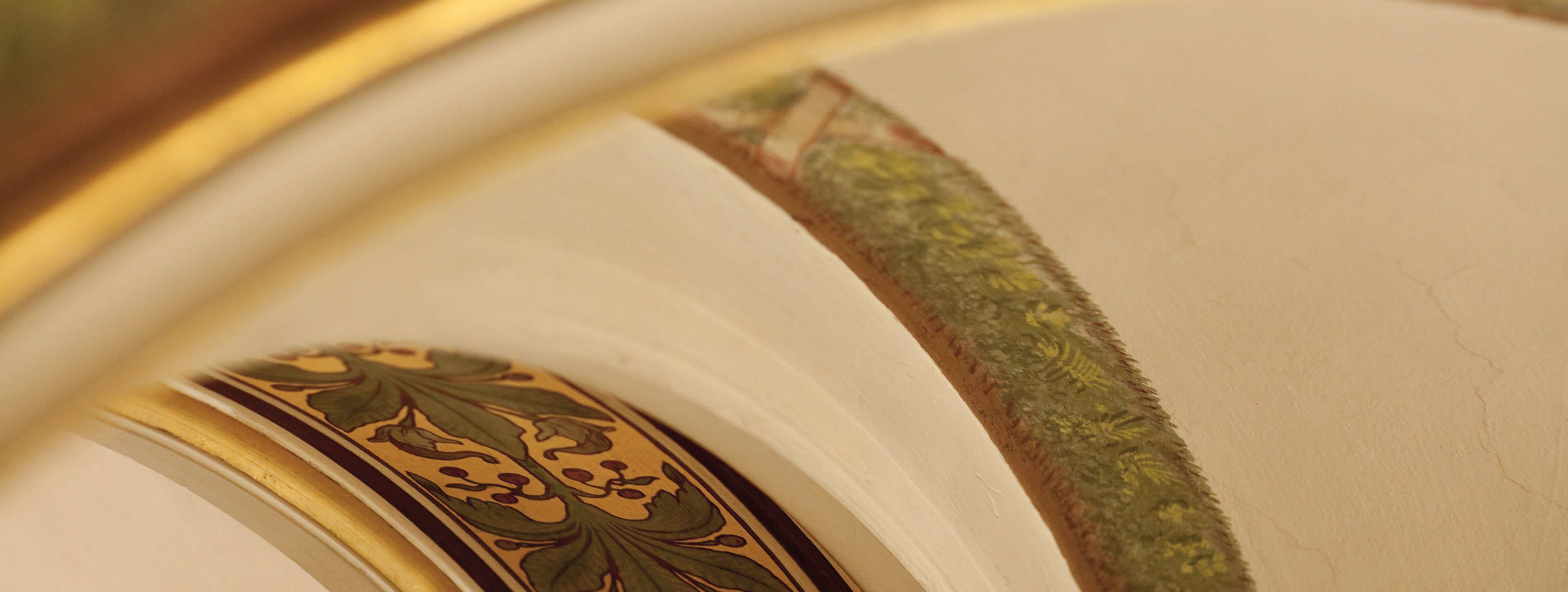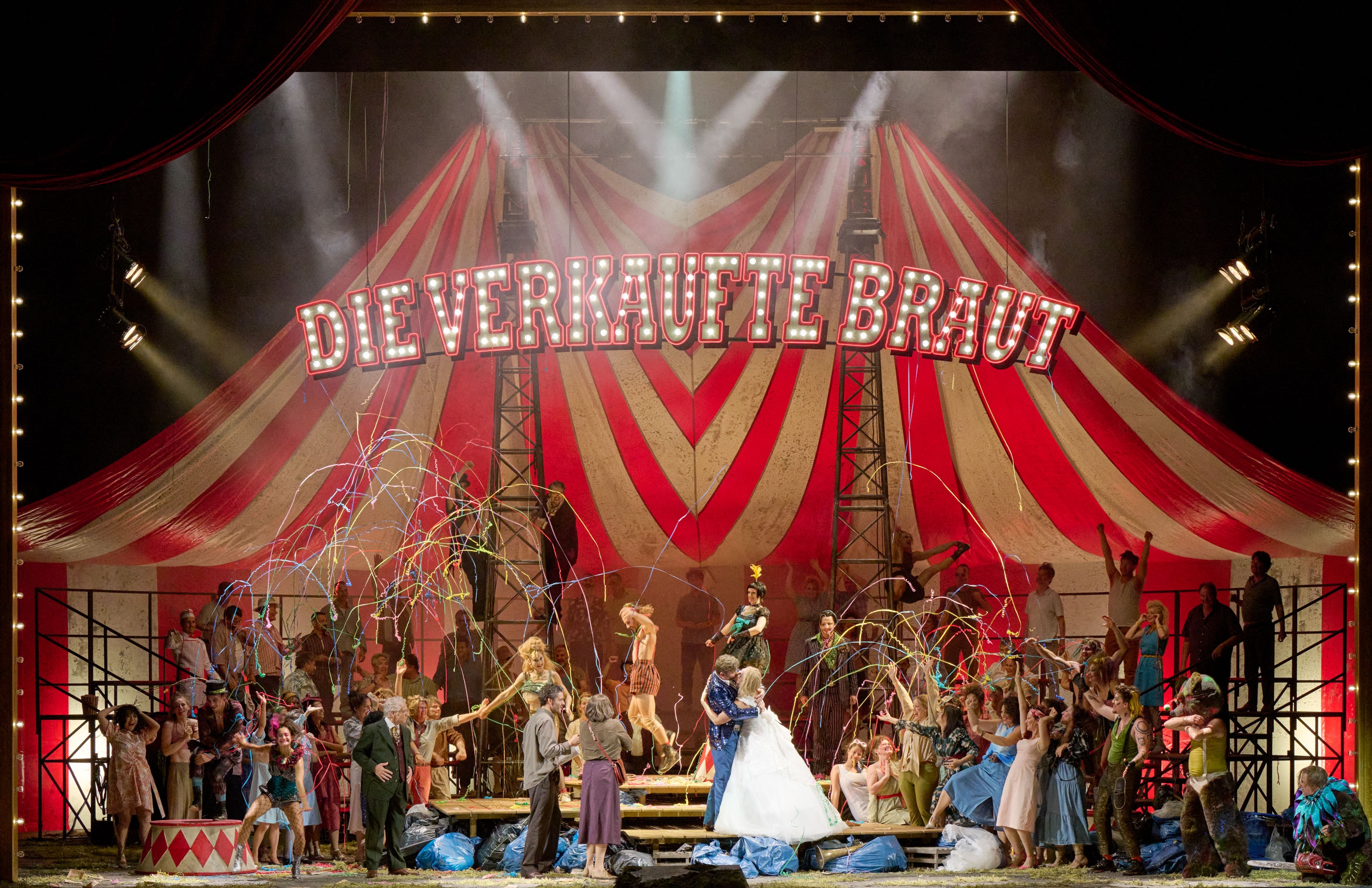
About the Production
Smetana's Bartered Bride depicts the state of emergency into which an entire Czech village is plunged during the fair and the seemingly hopeless struggle of a young woman for her seemingly betrayed and sold love. The utopian counter-world of a traveling circus holds up a mirror to the villagers' desires, their dependencies, fears and hopes.
The Bartered
Bride
Storyline
The small farmer Krušina is heavily in debt to the landowner Tobias Mícha. In order to buy his freedom, he contractually promised their daughter Mařenka to Mícha's son as his bride without his wife Ludmila's knowledge.
Mícha has - or had - two sons. The older one from his first marriage was ousted from the court by his stepmother Háta, Mícha's second wife, in favor of her son Vašek, and has since been considered missing. Now Mařenka is to marry Vašek. But Mařenka loves Jeník, a stranger who has found work in the village and who also loves her.
A church fair is celebrated in the country. Today, Mařenka is to be introduced to Vašek, the bridegroom her father wants. Mařenka is disturbed by Jeník's carelessness. When she asks him to tell her about his past, Jeník only reveals that he comes from a rich family but was robbed of his inheritance by his stepmother. The two lovers promise to remain faithful to each other forever.
The men sing the praises of the carefree power of beer, Jeník praises the power of love, Kecal the power of money. Mařenka has been lying in wait for the dressed-up Vašek. She takes advantage of the fact that they have never seen each other and describes the bride intended for him as a violent monster. She only responds to Vašek's advances towards her to the extent that she makes him swear to renounce Krušina's daughter forever.
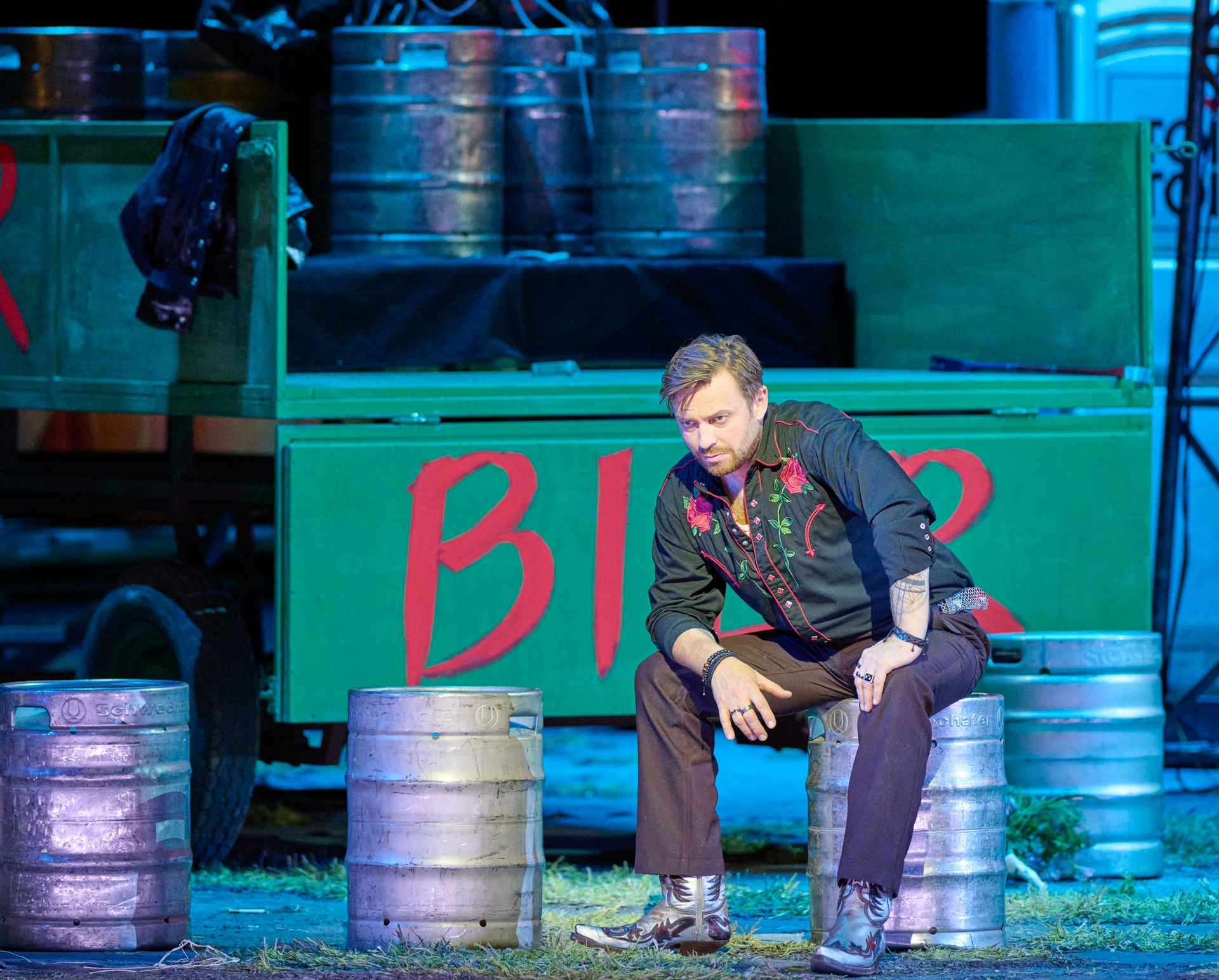
In the meantime, Kecal succeeds in persuading Jeník to give up Mařenka by offering him 300 guilders on the one hand and threatening him on the other. However, Jeník sets two conditions: He renounces in no other favor than Mícha's son, and with the wedding, the bride's father's debts must be considered time-barred. Jeník's sale of the bride is sealed before the eyes and to the indignation of the celebrating village.
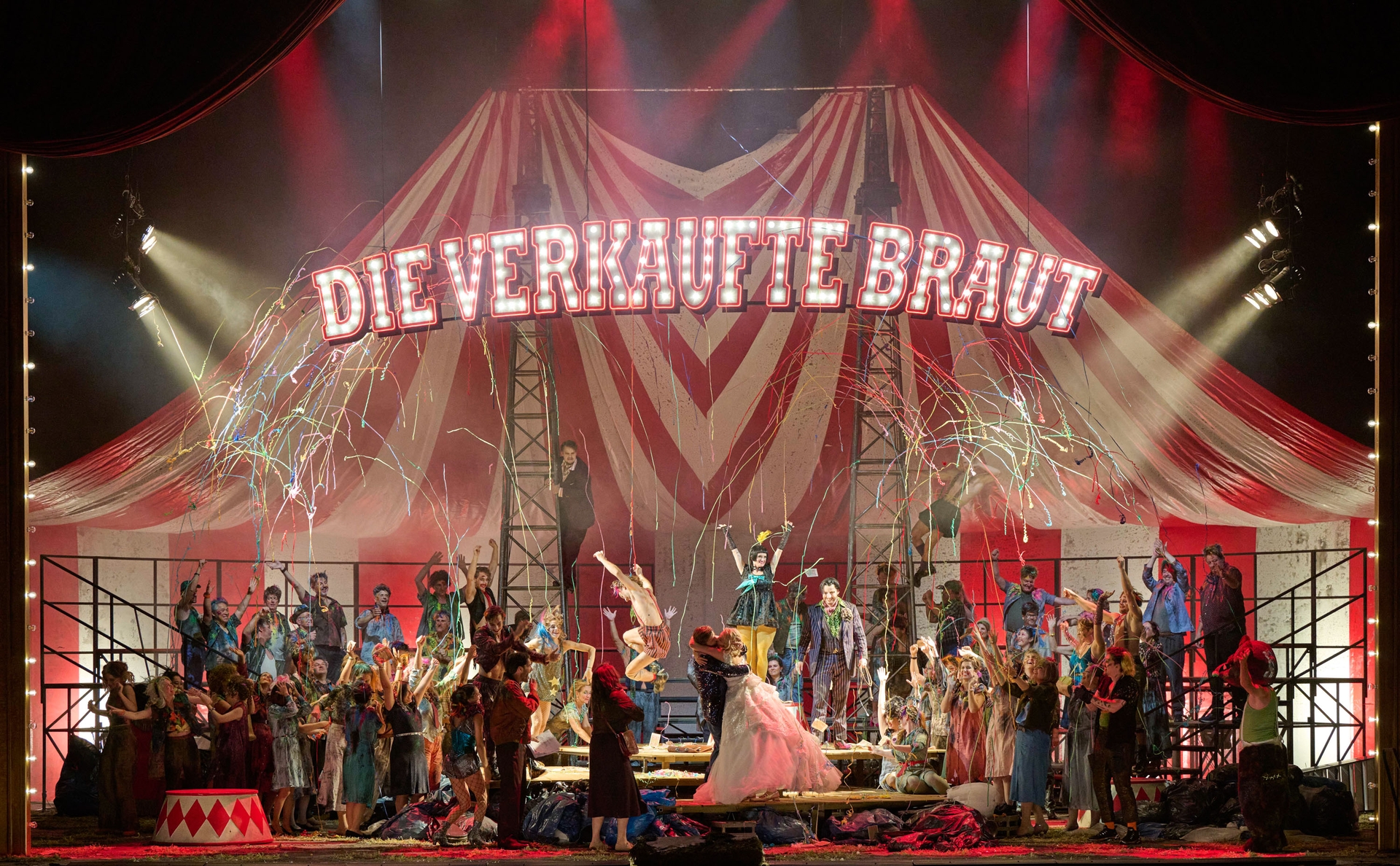
A circus has pitched its tent on the festival meadow. The performers give a demonstration of their art in front of Vašek. Vašek falls in love with the showgirl Esmeralda and she persuades him to stand in for the drunken performer of the dancing bear during the performance. Kecal wants to close the deal in the presence of the parents, but Vašek declares that he will not take Mařenka under any circumstances.
Kecal and Krušina confront Mařenka with Jeník's signature, with which he has sealed her sale. Vašek recognizes Mařenka as the attractive warner from the morning and agrees to marry her. The distraught Mařenka is given a short time to think things over. She cannot understand Jeník's betrayal of love.
When Jeník approaches Mařenka, she rejects all his attempts to explain and only wants to know whether the signature on the contract is his. Jeník says yes. When Jeník, alongside Kecal, pressures her to agree to marry Mícha's son, she herself calls the bride's parents and the whole village together to end the embarrassing situation by agreeing to marry Vašek. Mícha and Háta then recognize Jeník as their rejected son. They and Kecal, who is also bruised, can no longer prevent Mařenka's marriage to Mícha's first-born Jeník. Panic breaks out: The bear is loose! But it is Vašek who is raging in his fur - mother Háta calls him to order. Father Mícha offers Jeník his hand in reconciliation and does not refuse the couple his blessing.
In his search for a specifically Czech sound, the composer also tried to do justice to his love and admiration for the musical comedies of Mozart and Wagner - with astonishing success. The work matured from a two-act Singspiel version with spoken dialog, first performed in 1866, to its through-composed three-act form, which was premiered in 1870. The Bride owes its breakthrough to its world success to its Viennese performance at the then Court Opera in 1896. Since then, it has been a staple of the Viennese opera repertoire.
On the one hand, the new production builds on the Viennese tradition by deciding to produce the play in German translation. On the other hand, it breaks away from it to some extent, as Max Kalbeck's historical translation hardly does justice to the linguistic peculiarities of the original, its simplicity, poetry and directness. A new version was created in close collaboration with the musical and stage direction of the new production.
